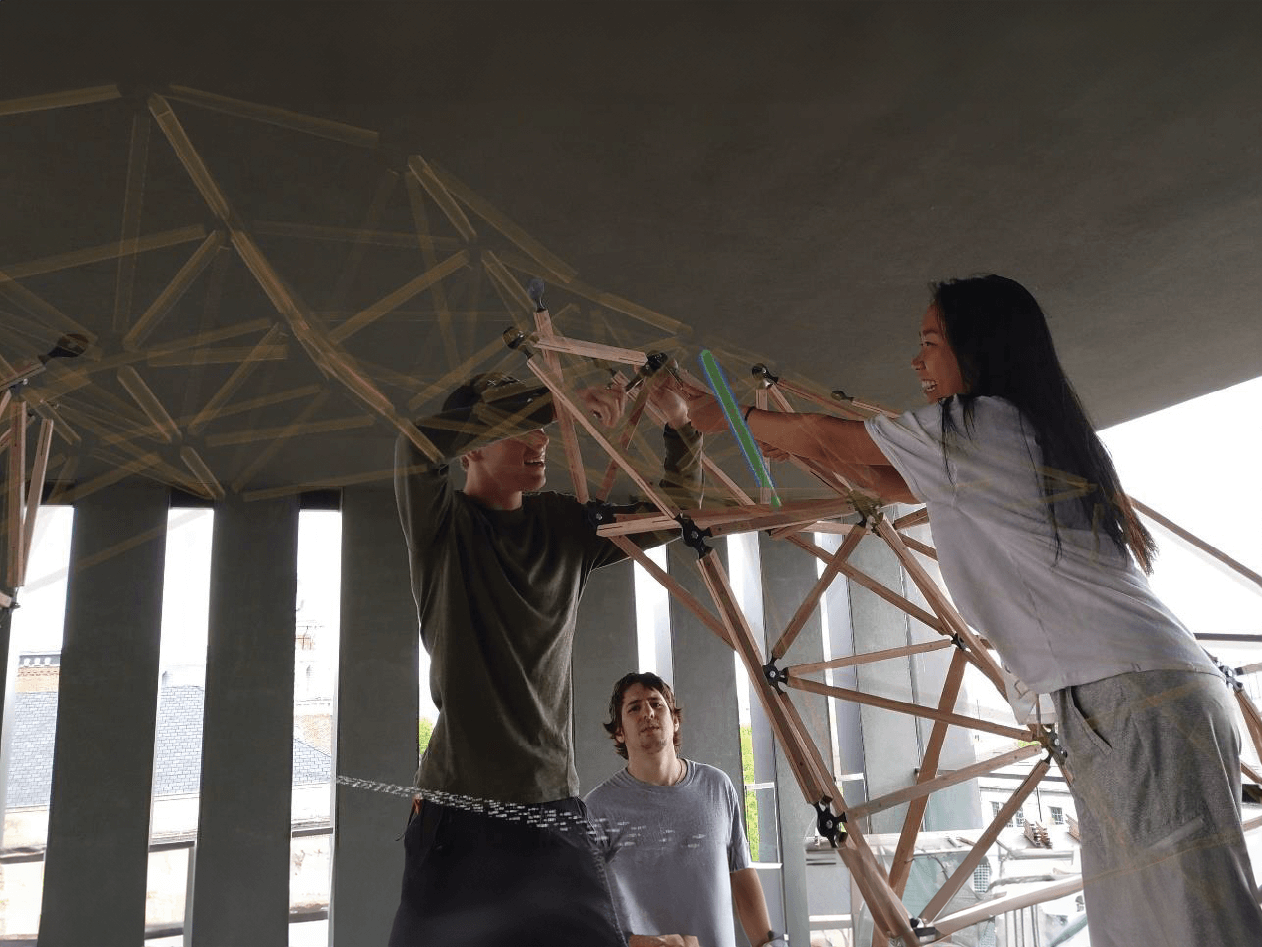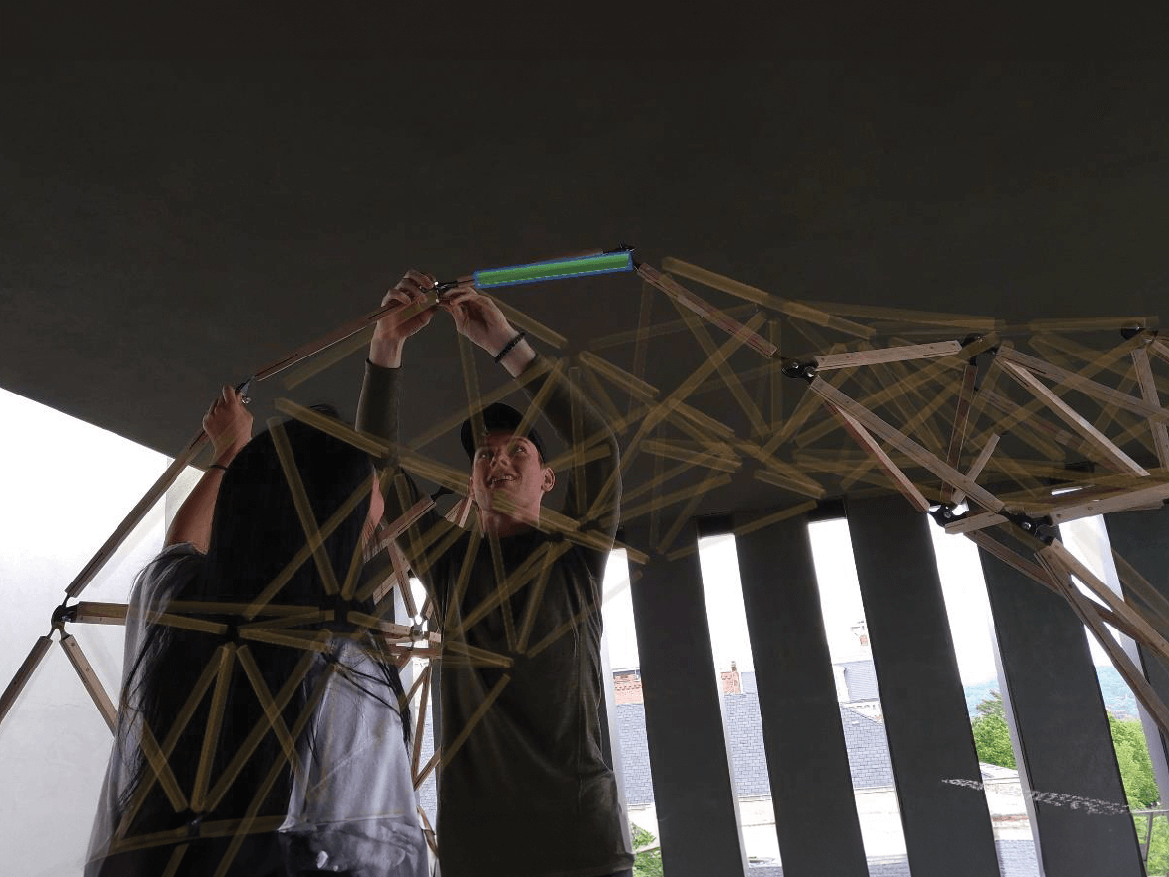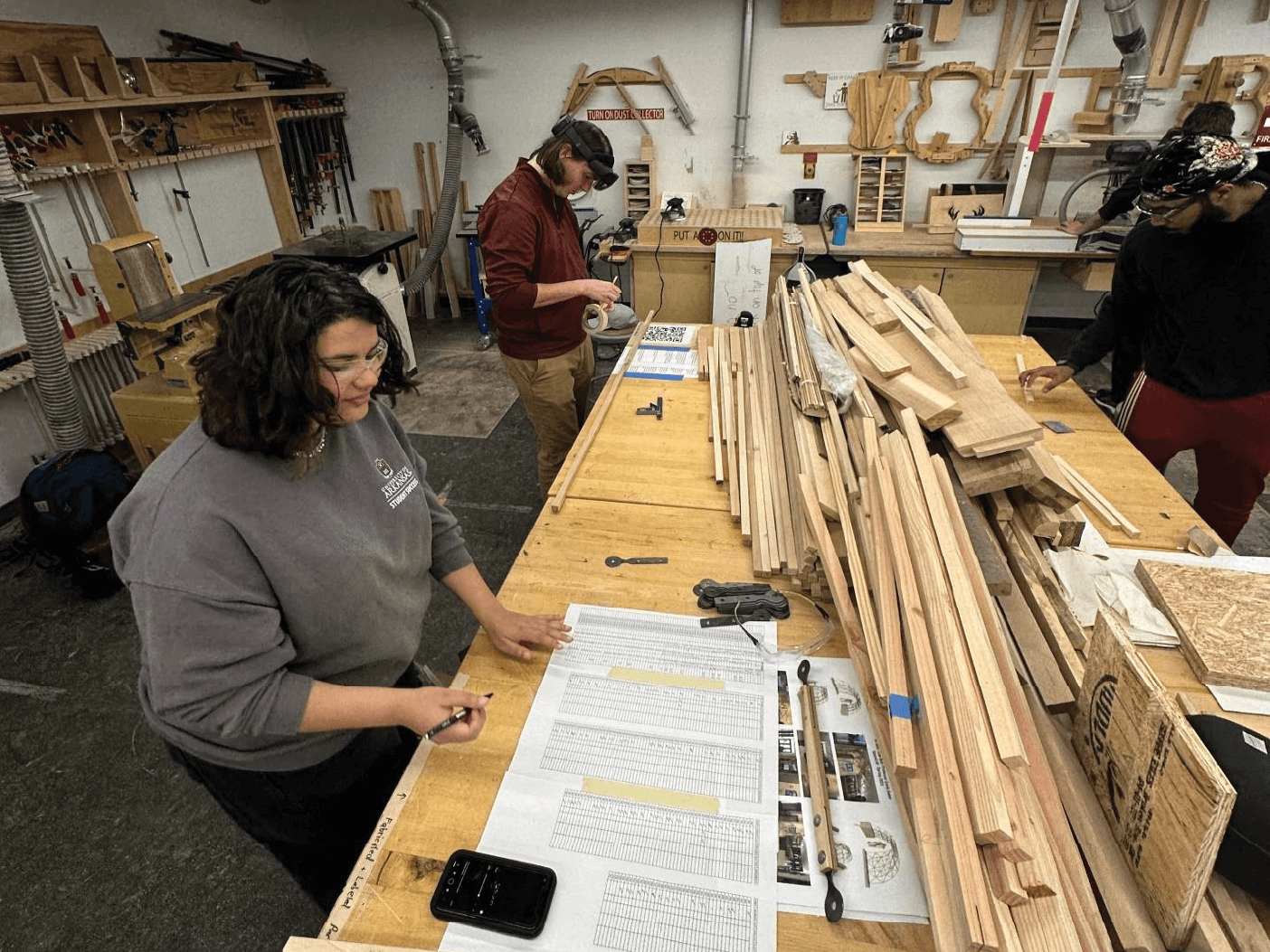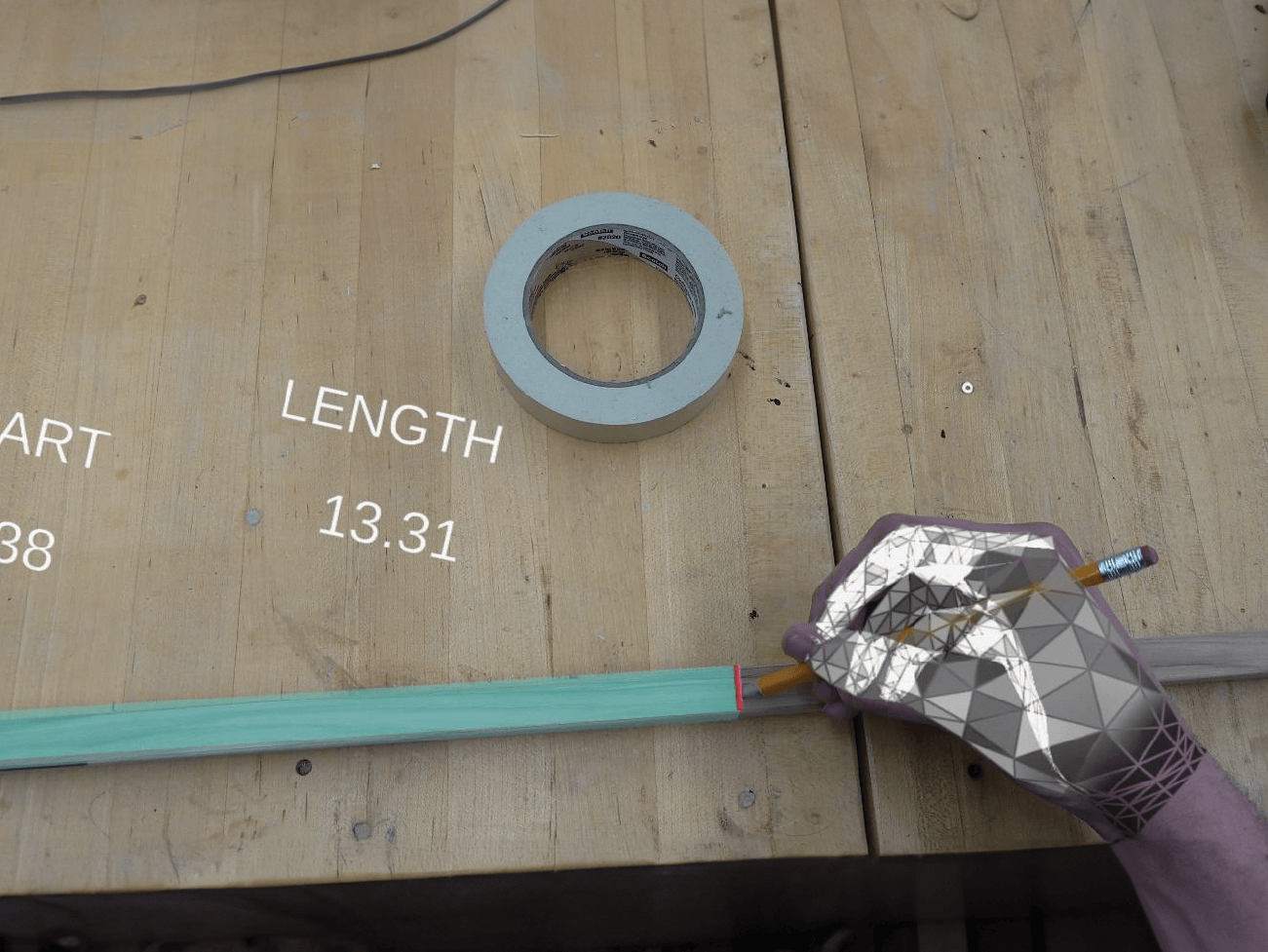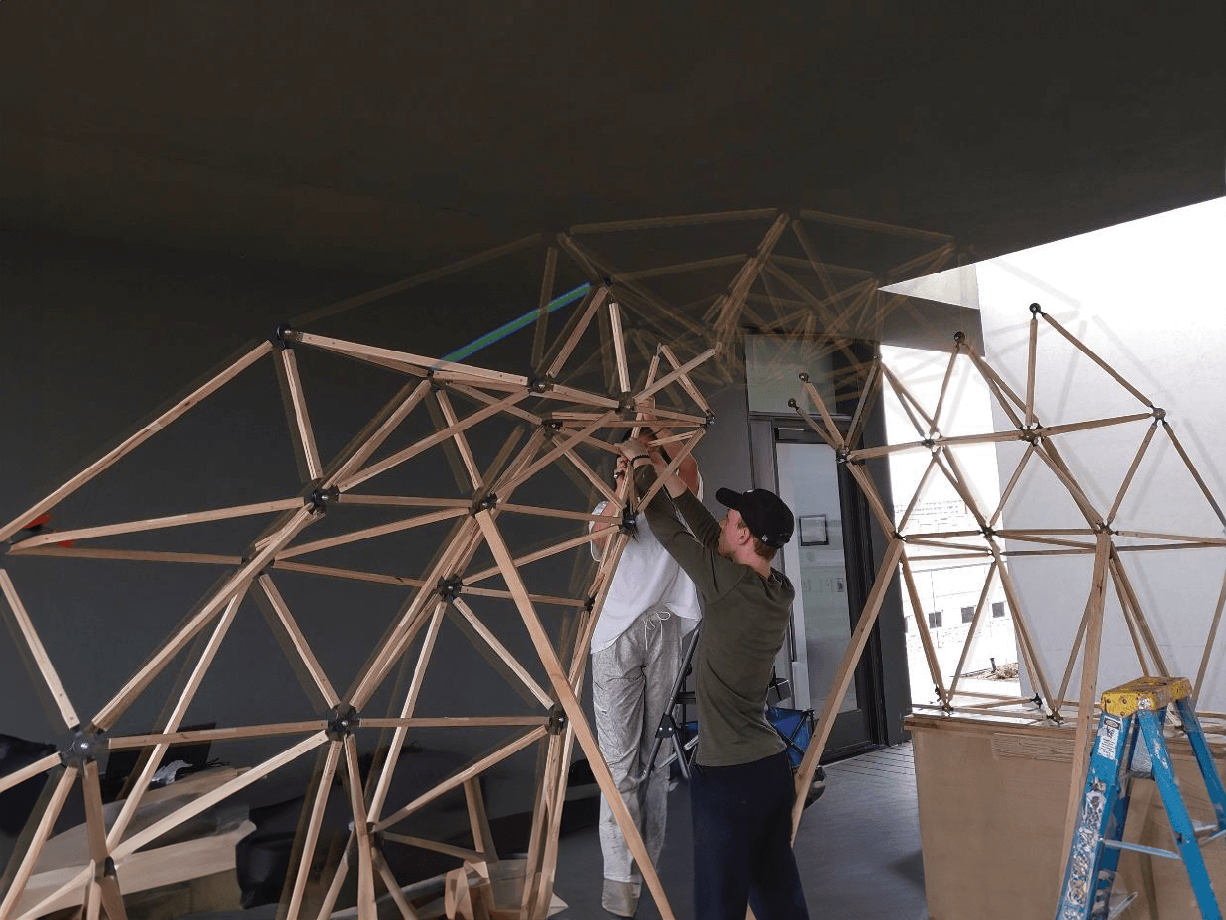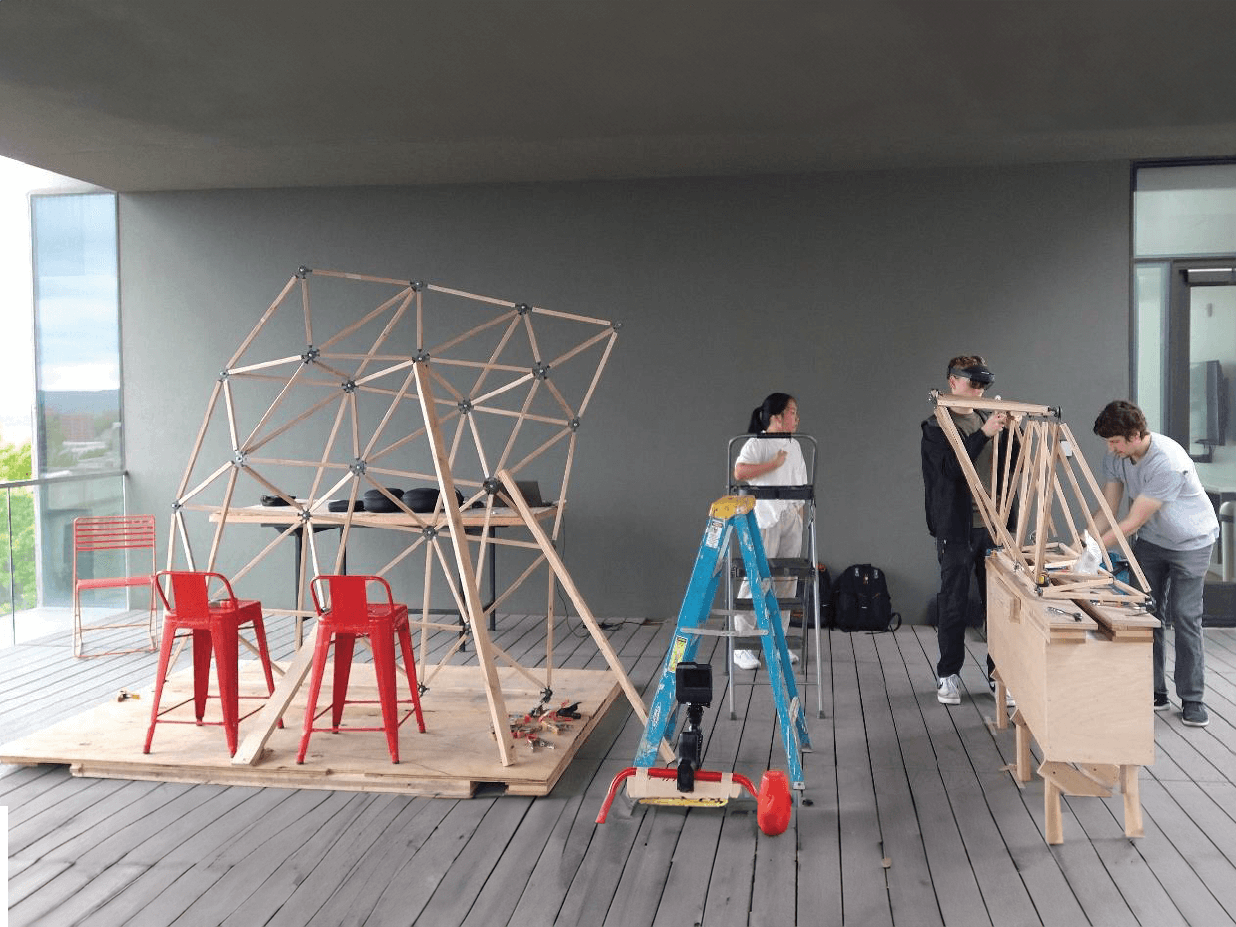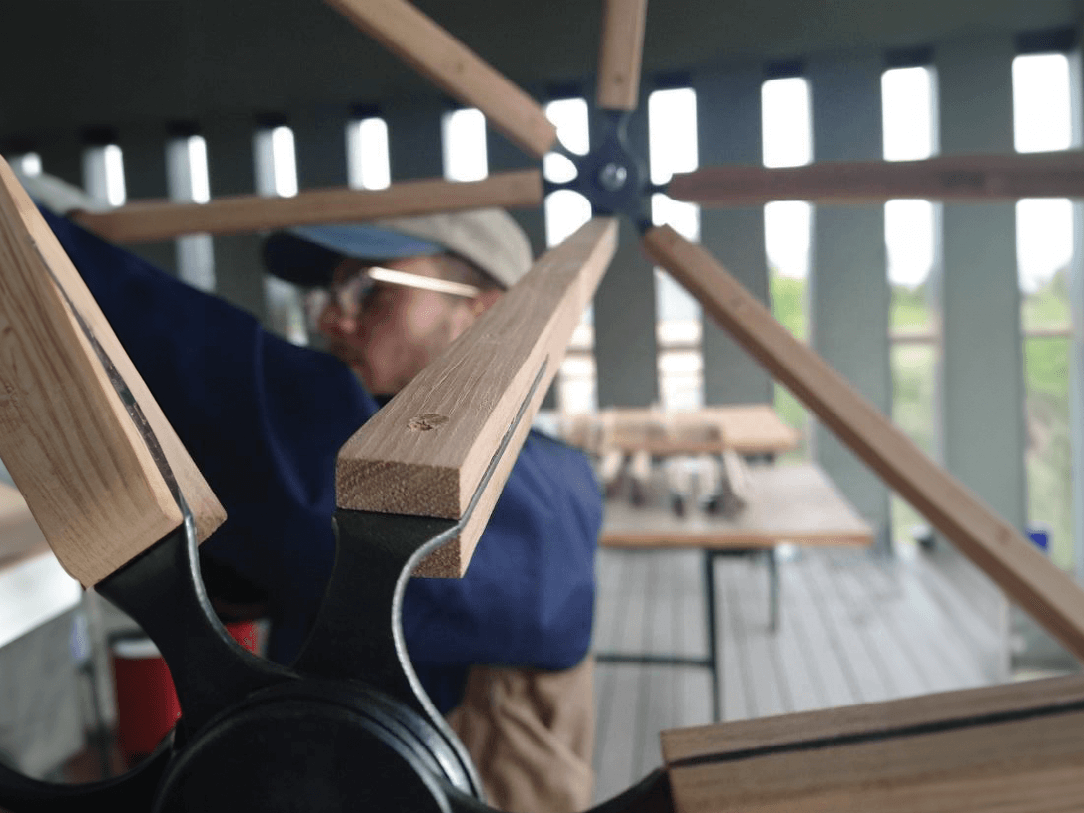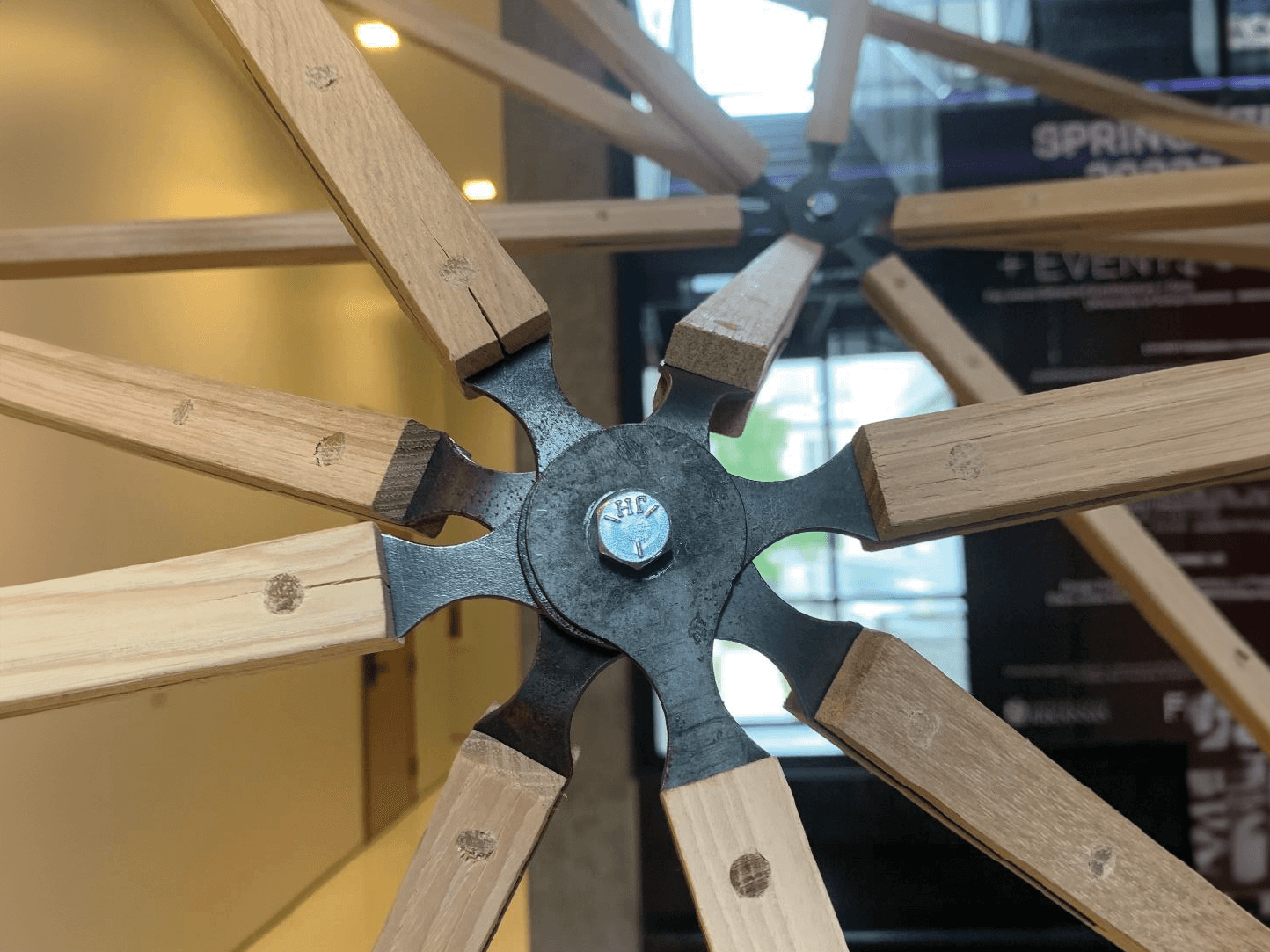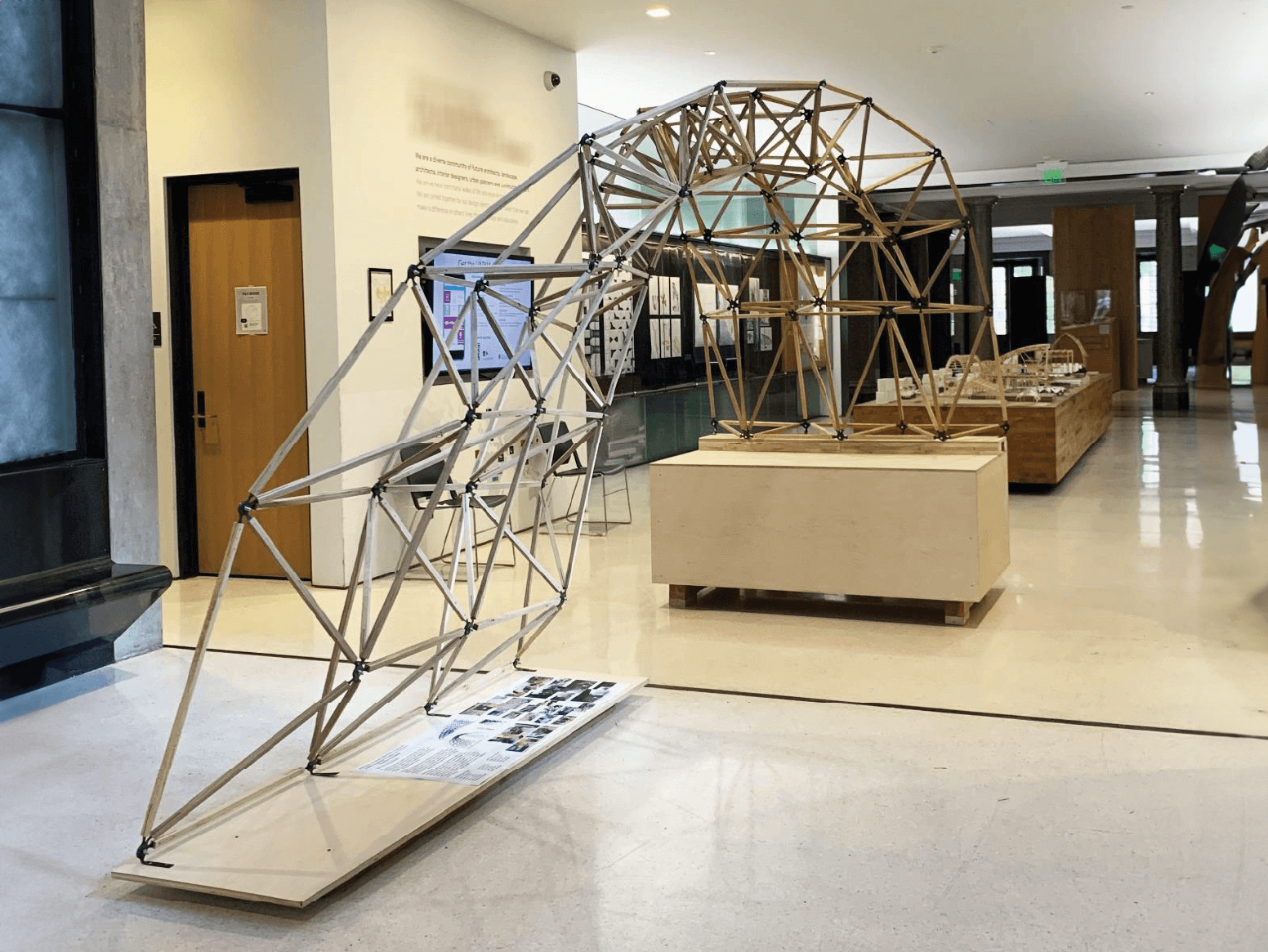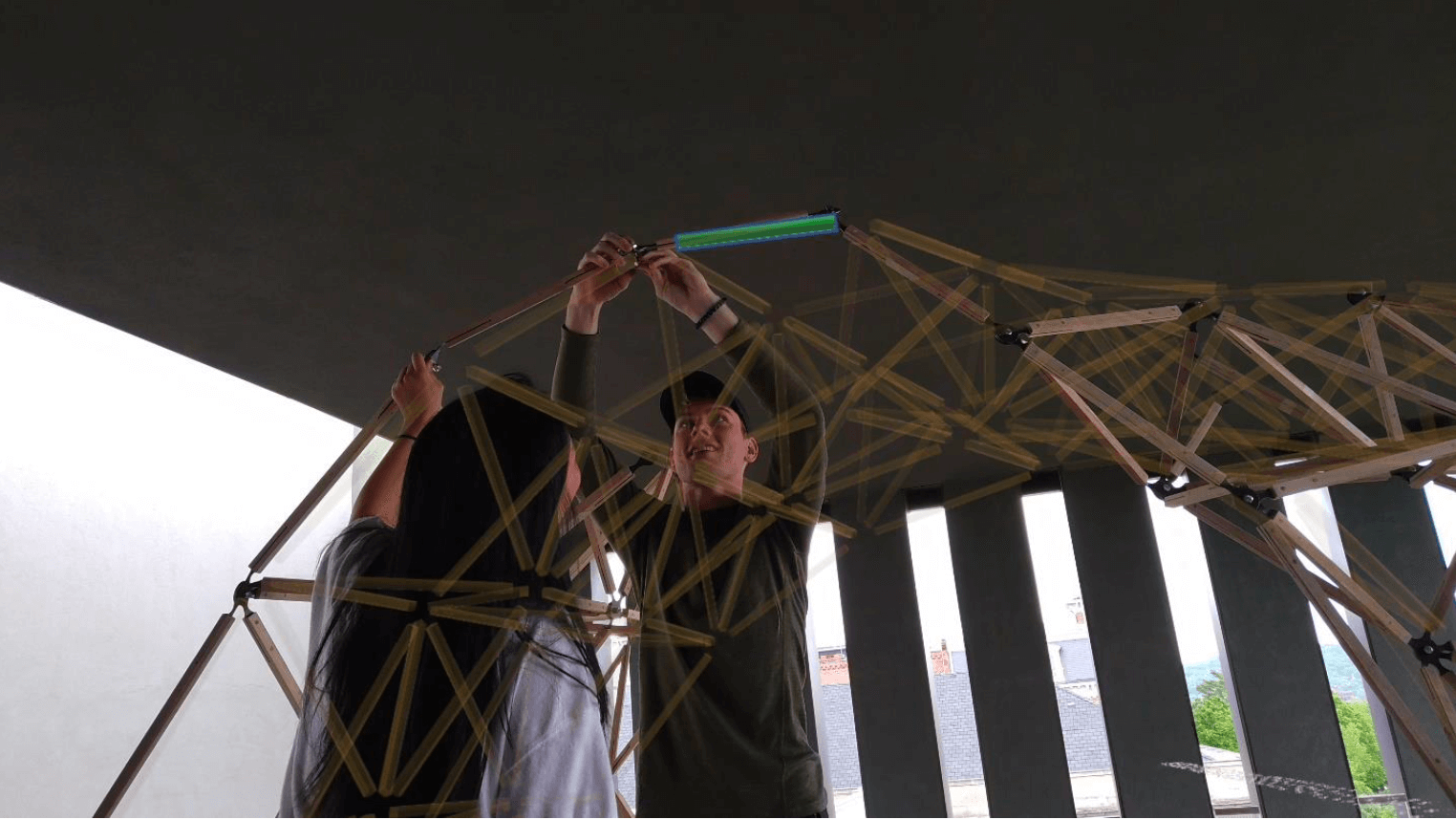
ACADIA 2022 Conference Submission
SpaceCraft: Building a Spatial Structure in Mixed Reality
Keywords: augmented reality, augmented fabrication, spaceframe, spatial structures, pedagogy
1. Project Abstract
SpaceCraft was the final 5-week project for an advanced architectural elective focused on the use of spatial computing (augmented and mixed reality) for design and fabrication. Students were asked to produce designs for a predominately wood spaceframe to be displayed within the common spaces of the school. Students used Fologram, a third-party extension for Rhinoceros 3D and Grasshopper 3D, (Jahn et al. 2018) paired with both mobile phones and Hololens headsets to envision designs in situ, and the class collaborated to refine a final collaborative proposal—a twisting arch. The spaceframe consisted of identical steel connection parts and hickory wood struts connected with friction-fit dowelled joints. The form of the spaceframe ensured that no two parts in the assembly were identical, and the angles formed at each node in the spaceframe were unique. There was a total of about 360 linear feet of hickory material available, milled to 3⁄4” square stock. Grasshopper 3D was used to assess the amount of material needed and adjust the design as required to fit within material constraints. An algorithm was used to place the varying length parts onto the 5’ stock lengths of material in order to minimize material waste.
Students used mixed reality headsets connected to their computational model as a holographic template to both cut the wood struts to specific lengths and to position and bend the metal connectors to assemble the space frame. This minimal spaceframe joint achieved angular adjustability by rotational movement around the connecting faster in one axis, and achieved another degree of freedom through plastic deformation of the steel connector pieces, which were designed to bend in a specified zone. Instead of pre-bending the steel pieces into the proper angles, the class opted to bend connectors in relation to the holographic guide in situ in the space frame. This spaceframe design allowed for both the flexibility and tolerance required of the fabrication method, and the rigidity necessary for structural stability.
The fabrication process, undertaken by undergraduate students with minimal experience in construction or advanced fabrication, made clear that mixed reality fabrication makes the production of non-standardized structural assemblies not only feasible, but easy and fast. The piece consisting of 288 wood struts took approximately 8 hours for small groups of students to assemble once the woodwork was complete. Spatial computing will expand and democratize non-standard construction practices as these technologies develop and become more ubiquitous.
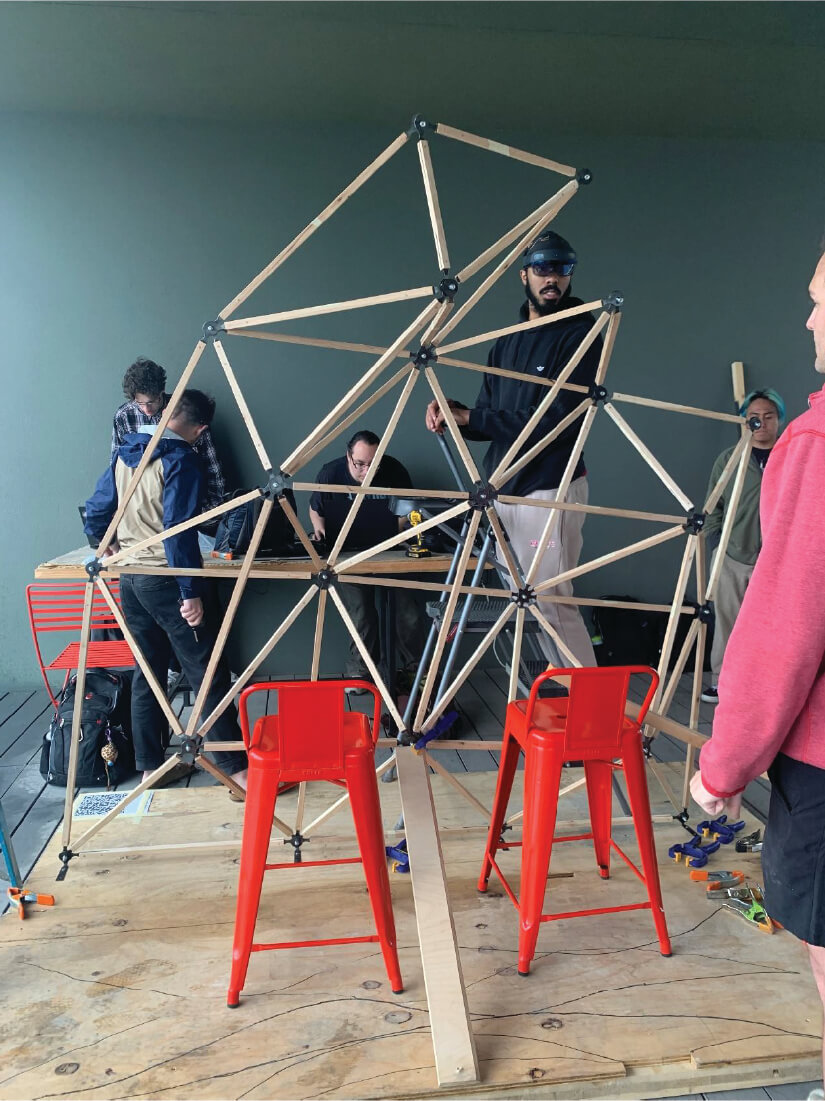
Students assemble spaceframe using holographic guide
References
Jahn, G., Newnham, C., and Beanland, M. (2018). ‘Making in Mixed Reality. Holographic design, fabrication, assembly and analysis of woven steel structures’ in Proceeding of ACADIA 2018, Mexico City, Mexico, pp. 88-97.
